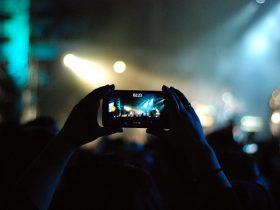In today’s diverse marketplace, capturing the hearts (and wallets) of consumers requires a targeted approach. Nostalgia marketing, a powerful tool that leverages positive memories from the past, can be incredibly effective when tailored to specific generations. By understanding the cultural touchstones and cherished memories of different age groups, you can craft marketing campaigns that resonate on a deeper level.
Effectively Reaching Your Target Audience
The key to successful nostalgia marketing lies in authenticity. Don’t simply throw in random references from the past. Instead, delve into the cultural zeitgeist of each generation. What were the defining moments? What trends shaped their identities? By tapping into these shared experiences, you can create a powerful emotional connection with your target audience.
Baby Boomers (Born 1946-1964)
For Baby Boomers, the post-war era was a time of optimism and prosperity. They hold the “Golden Age” of television in high regard, fondly remembering iconic shows like I Love Lucy and The Andy Griffith Show. Classic rock music also played a significant role in their lives, with bands like The Beatles and The Rolling Stones providing the soundtrack to their youth. The American Dream, characterized by homeownership and upward mobility, was a core value for this generation.
Examples:
- Consider featuring commercials that recreate the feel of classic television shows.
- Partner with brands or musicians that hold a special place in the hearts of Baby Boomers. Imagine a campaign featuring a popular classic rock band promoting your product alongside a nostalgic jingle.
Generation X (Born 1965-1980)
Generation X witnessed the rise of personal computers and the dawn of the digital age. Grunge music, with its raw energy and rebellious spirit, resonated with their experiences. Unlike Boomers, they weren’t raised on television, but rather spent their formative years navigating the pre-internet era, fostering a sense of self-reliance and resourcefulness.
Examples:
- Showcase vintage video game consoles like the Nintendo Entertainment System or classic gadgets like the Walkman in your marketing materials.
- Utilize grunge music or artists from that era as background tracks to evoke a sense of nostalgia.
Millennials (Born 1981-1996)
Millennials witnessed the explosion of the internet and the rise of digital communication. Their pop culture references range from the vibrant 90s cartoons like Rugrats and Hey Arnold! to the early 2000s teen dramas. Social media platforms like Facebook and Myspace became integral parts of their social lives, fostering a sense of global connection.
Examples:
- Reference popular 90s cartoons or movies in your marketing copy. A humorous tagline that references a catchphrase from a favorite show can be a great conversation starter.
- Partner with social media influencers who resonate with the Millennial audience.
The rise of social media has created a generation obsessed with creating visually-appealing content. Digitizing old video tapes and using a video transfer service can unlock a treasure trove of memories and provide unique content for social media. These digitized tapes can be transformed into trendy edits or nostalgic throwbacks, adding a unique touch to any millennial’s online presence.
Generation Z (Born 1997-2012)
Gen Z is the first generation to grow up entirely in the digital age. Social media is their primary source of communication and entertainment. Memes and user-generated content play a central role in their online experience. This generation values individuality and social causes.
Examples:
- Partner with Gen Z content creators who align with your brand values.
- Utilize user-generated content on platforms like TikTok and Instagram to build a sense of community and authenticity. Encourage them to share their own nostalgic memories using a specific hashtag.
Conclusion
Nostalgia marketing is a powerful tool that can be used to connect with consumers on a deeper level. By understanding the unique experiences and cultural touchstones of each generation, you can craft marketing campaigns that evoke positive memories and create a lasting connection with your target audience. So, delve into the past, but ensure your message remains relevant to the present. After all, nostalgia might be the hook, but it’s your product or service that needs to deliver in the modern world.










